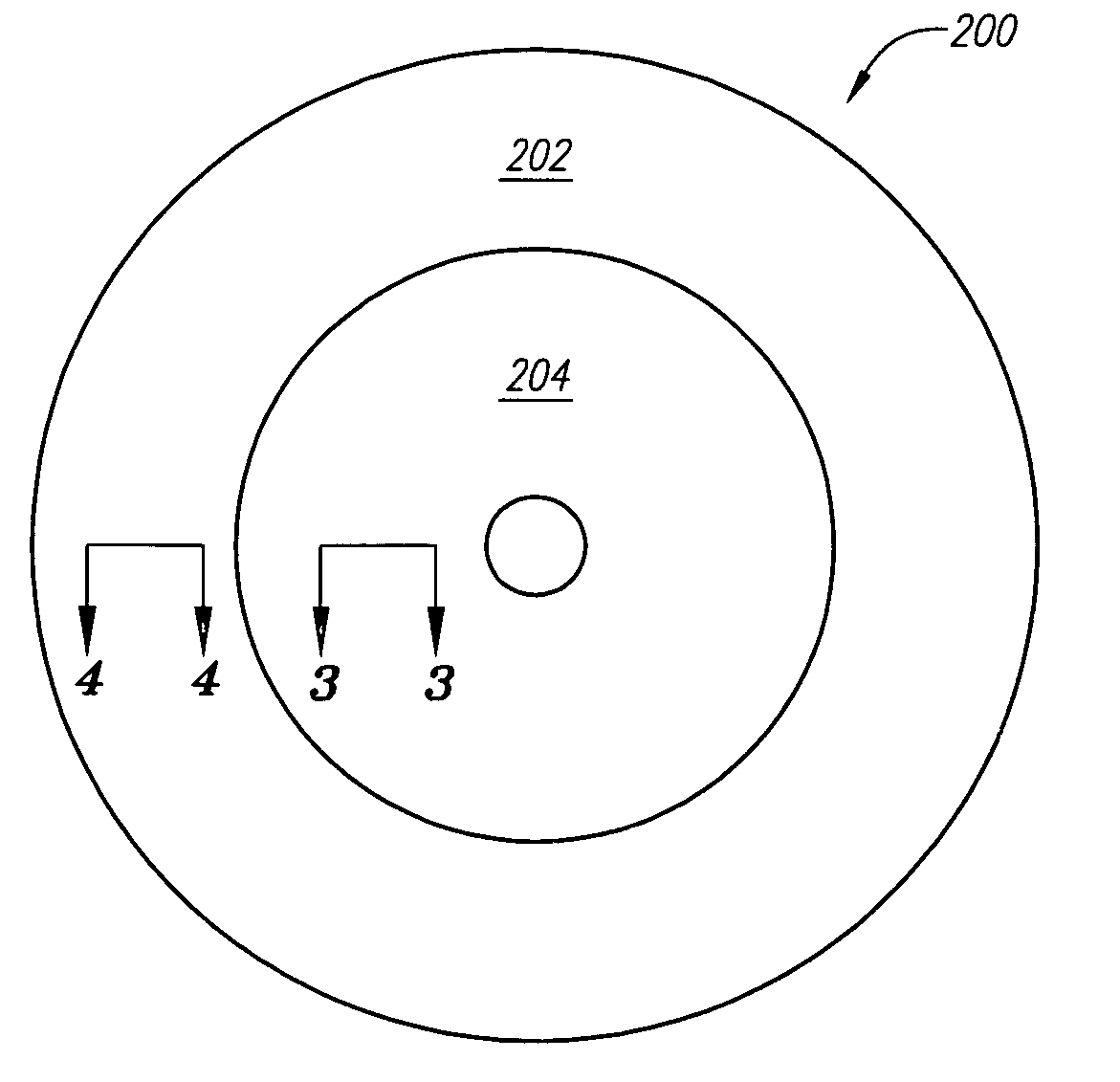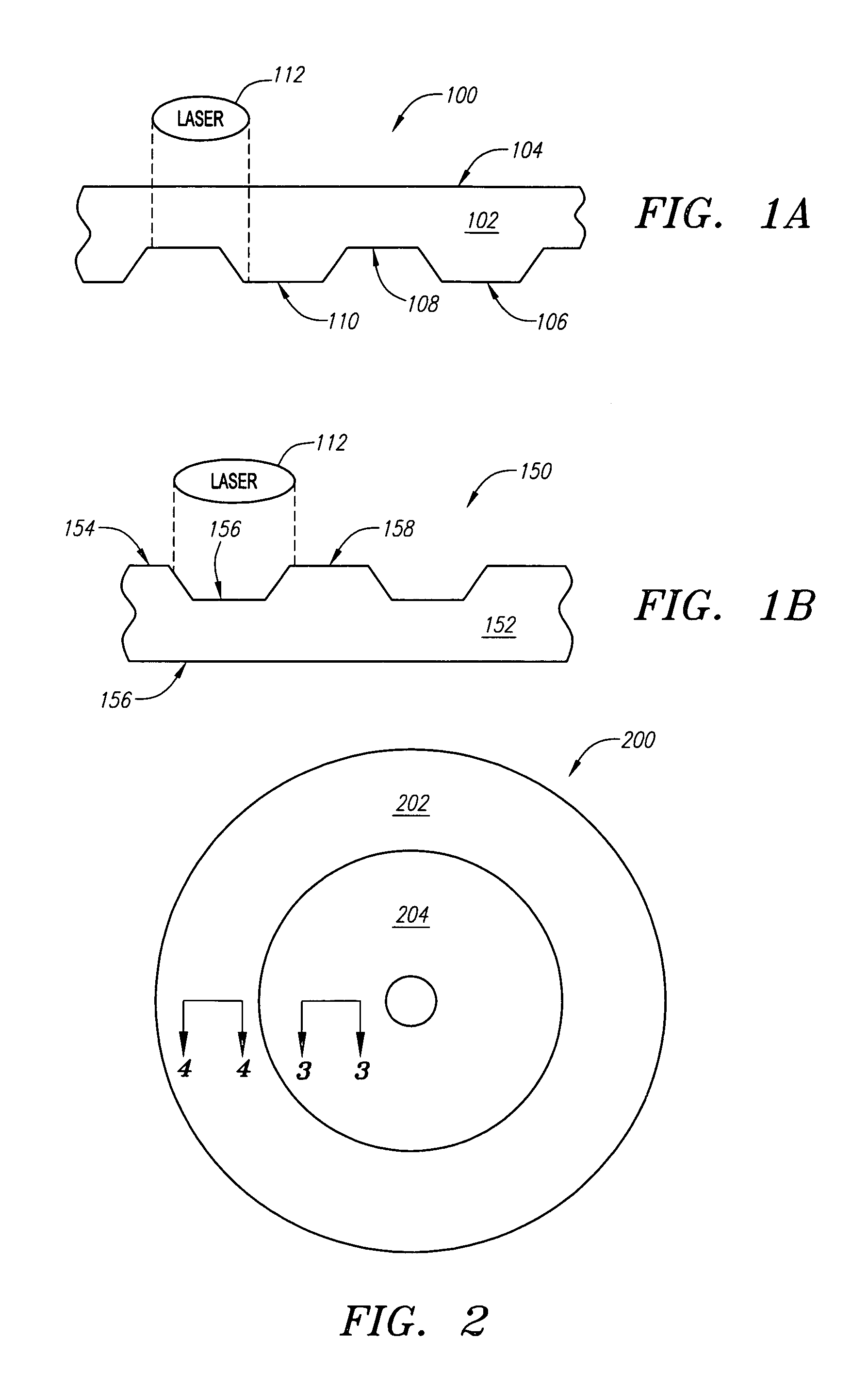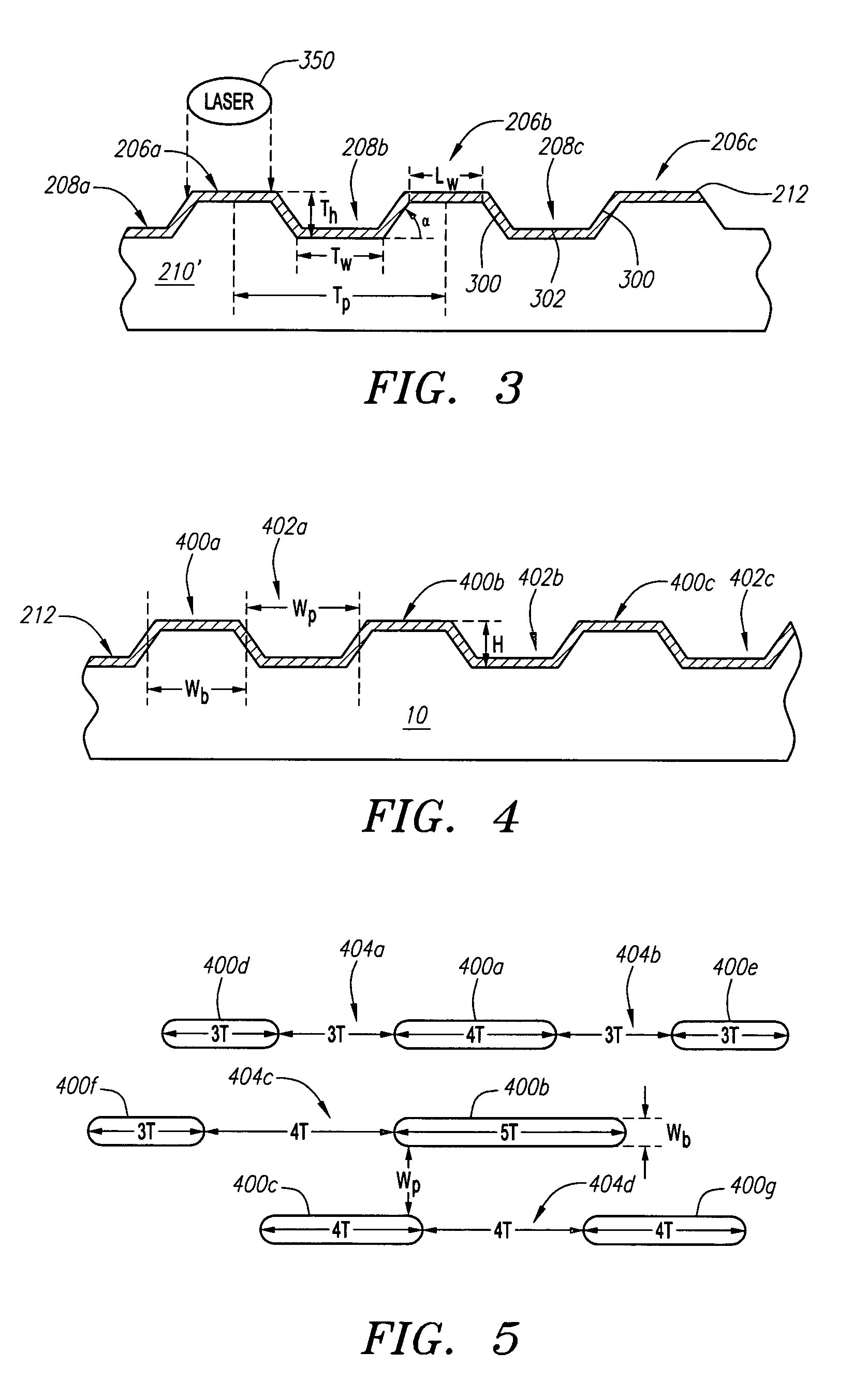Dual density disc with associated properties
a technology of optical discs and associated properties, applied in the field of optical discs, can solve the problems of reducing the effective depth of the groove when writing on the land, and achieve the effects of shortening the optical path, and shortening the working distan
- Summary
- Abstract
- Description
- Claims
- Application Information
AI Technical Summary
Benefits of technology
Problems solved by technology
Method used
Image
Examples
Embodiment Construction
[0029]In accordance with one aspect of the present invention, a first surface optical disc includes both ROM or pre-recorded portions and recordable or writable portions for storing data. The density or storage capacity of the ROM portions is lower than the density of the recordable portions. Data is written (e.g., with a laser) to the-recordable portions, and more specifically on a phase-change material overlying lands, instead of grooves. The laser changes the state of the material from an amorphous state to a crystalline state having a higher reflectivity than the amorphous state. The change to a crystalline state alters the physical structure and optical constants of the material.
[0030]FIGS. 1A and 1B illustrate a difference between first surface discs and second surface or substrate-incident discs. FIG. 1A is a cross-sectional side view of a second surface disc 100. Disc 100 includes a substrate 102 (e.g., made of a polycarbonate material) having a substrate surface 104 and an ...
PUM
| Property | Measurement | Unit |
|---|---|---|
| outer diameter | aaaaa | aaaaa |
| outer diameter | aaaaa | aaaaa |
| thickness | aaaaa | aaaaa |
Abstract
Description
Claims
Application Information
 Login to View More
Login to View More - R&D
- Intellectual Property
- Life Sciences
- Materials
- Tech Scout
- Unparalleled Data Quality
- Higher Quality Content
- 60% Fewer Hallucinations
Browse by: Latest US Patents, China's latest patents, Technical Efficacy Thesaurus, Application Domain, Technology Topic, Popular Technical Reports.
© 2025 PatSnap. All rights reserved.Legal|Privacy policy|Modern Slavery Act Transparency Statement|Sitemap|About US| Contact US: help@patsnap.com



